Abstract
The fibrin clot penetration and in vivo bactericidal activity of RP 59500, a new semisynthetic streptogramin, for two Staphylococcus aureus strains (one methicillin resistant and the other methicillin susceptible), two Staphylococcus epidermidis strains (one methicillin resistant and the other methicillin susceptible), and one Enterococcus faecalis strain were evaluated. The clots, inserted subcutaneously, were infected with a mean of 10(8) CFU of the pathogen per g. For each strain, groups of four rabbits received a single intravenous injection of 50 mg of RP 59500 per kg of body weight over 30 min. The mean peak level of RP 59500 in serum in the infected rabbits was 61.9 +/- 6.3 micrograms/ml. The drug was detectable in serum at a level of 0.8 micrograms/ml up to 4 h after administration. The mean peak fibrin clot drug level at 1 h was 3.3 +/- 0.1 micrograms/g. At 6 h, the level in clots was 1.2 +/- 0.1 micrograms/g. The mean half-life in serum in infected rabbits was 0.34 +/- 0.01 h, while in clots the drug exhibited a longer half-life of 3.8 +/- 0.4 h. In vivo, this new streptogramin sterilized the clots infected with the two S. aureus strains studied in less than 1 h and induced a marked reduction in colony counts of the two S. epidermidis strains studied for up to 24 h. The activity of the streptogramin against E. faecalis was limited. These results suggest that RP 59500 should be further evaluated for the treatment of infection with methicillin-resistant staphylococci.
Full text
PDF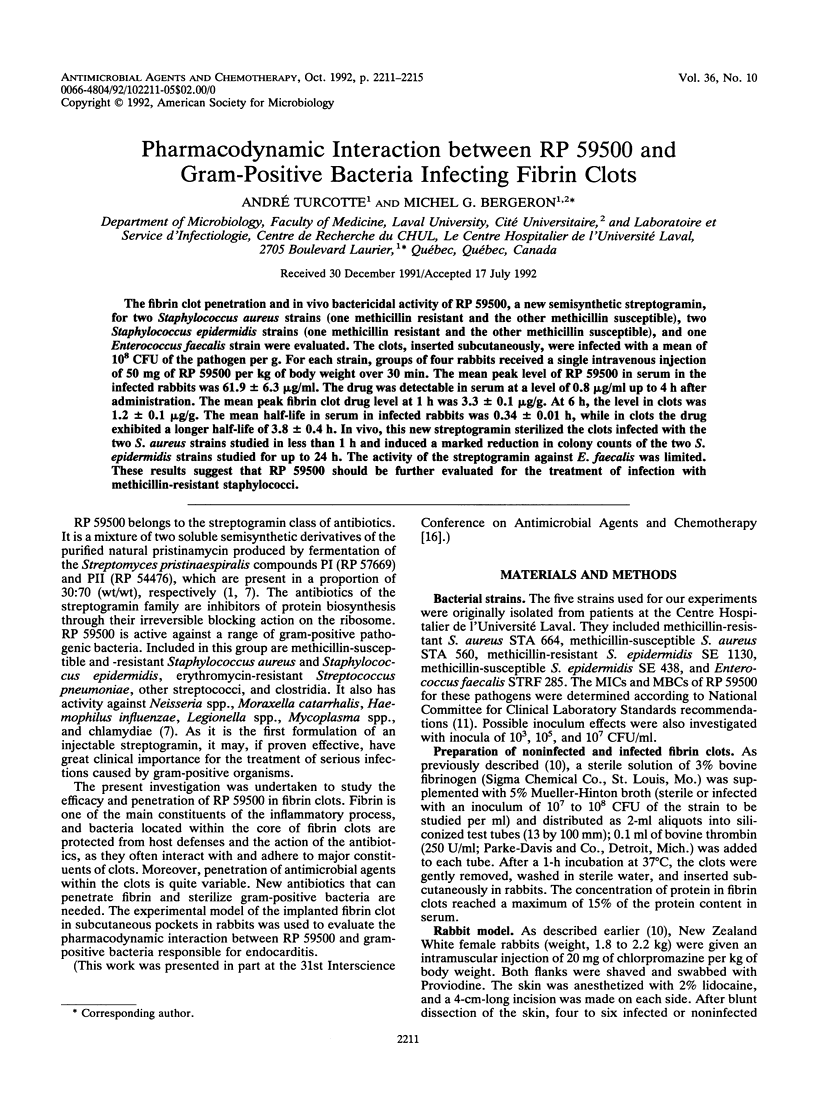
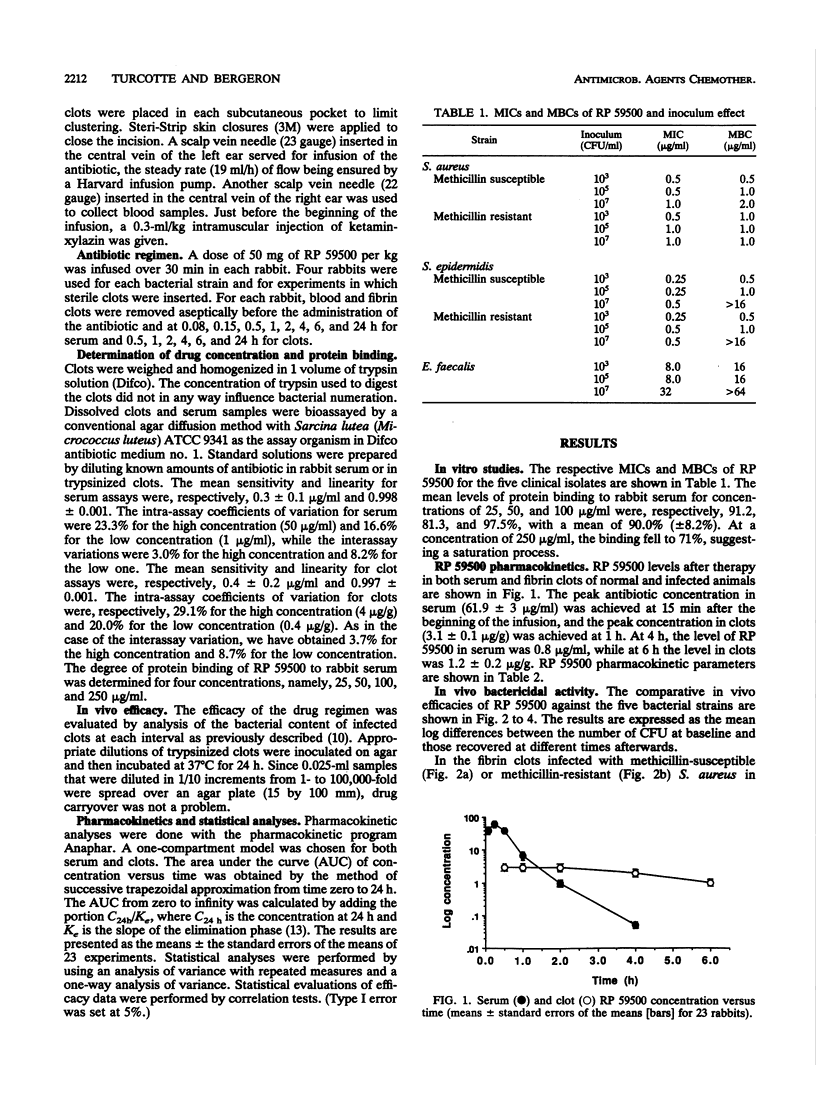
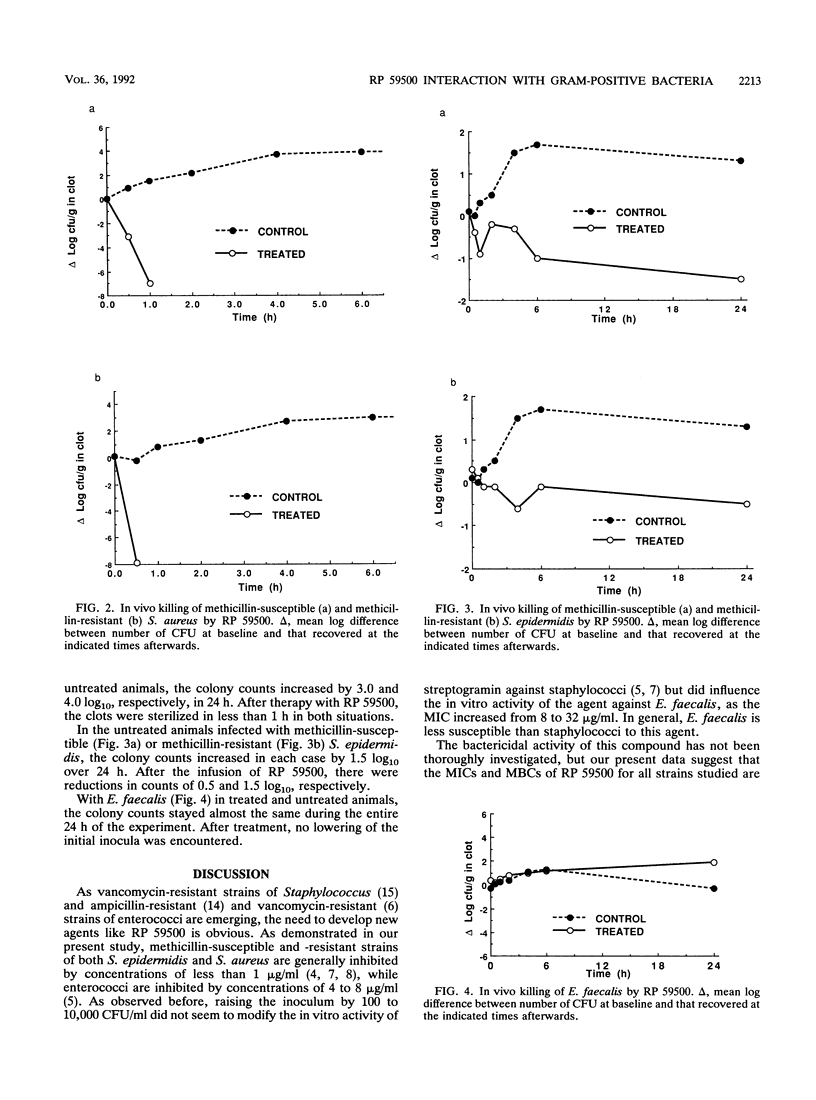
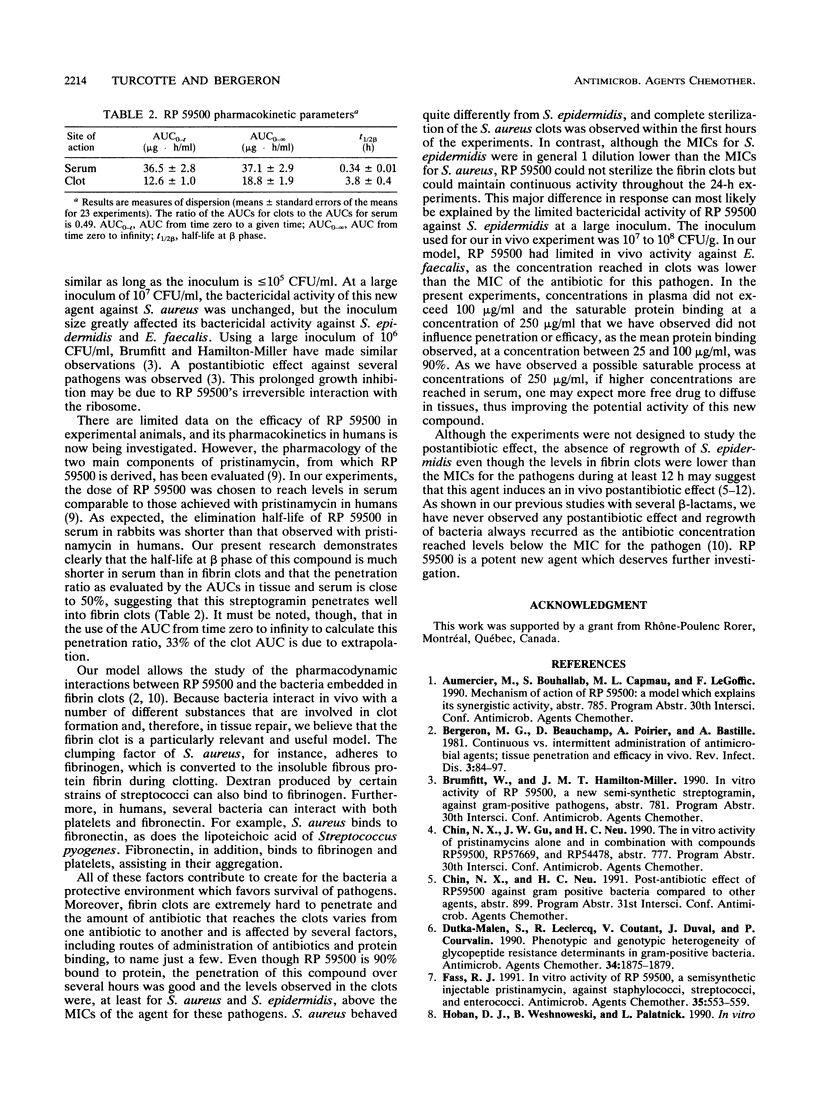
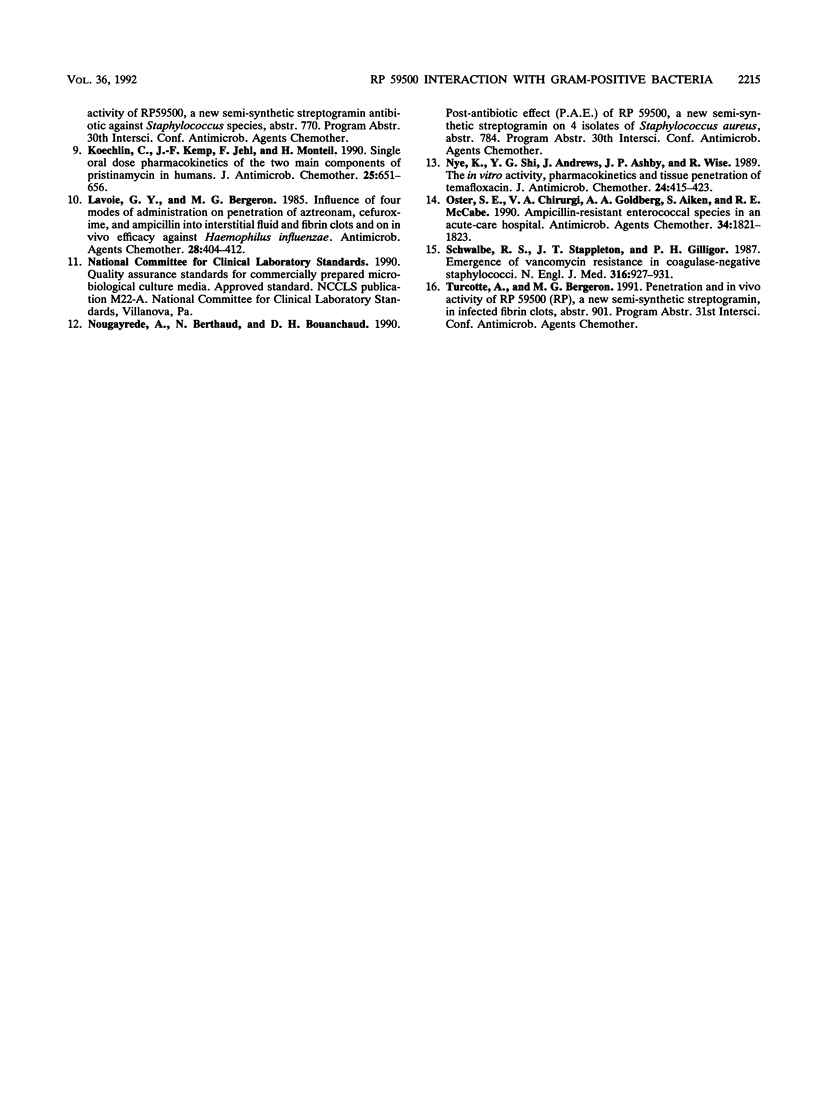
Selected References
These references are in PubMed. This may not be the complete list of references from this article.
- Bergeron M. G., Beauchamp D., Poirier A., Bastille A. Continuous vs. intermittent administration of antimicrobial agents: tissue penetration and efficacy in vivo. Rev Infect Dis. 1981 Jan-Feb;3(1):84–97. doi: 10.1093/clinids/3.1.84. [DOI] [PubMed] [Google Scholar]
- Dutka-Malen S., Leclercq R., Coutant V., Duval J., Courvalin P. Phenotypic and genotypic heterogeneity of glycopeptide resistance determinants in gram-positive bacteria. Antimicrob Agents Chemother. 1990 Oct;34(10):1875–1879. doi: 10.1128/aac.34.10.1875. [DOI] [PMC free article] [PubMed] [Google Scholar]
- Fass R. J. In vitro activity of RP 59500, a semisynthetic injectable pristinamycin, against staphylococci, streptococci, and enterococci. Antimicrob Agents Chemother. 1991 Mar;35(3):553–559. doi: 10.1128/aac.35.3.553. [DOI] [PMC free article] [PubMed] [Google Scholar]
- Koechlin C., Kempf J. F., Jehl F., Monteil H. Single oral dose pharmacokinetics of the two main components of pristinamycin in humans. J Antimicrob Chemother. 1990 Apr;25(4):651–656. doi: 10.1093/jac/25.4.651. [DOI] [PubMed] [Google Scholar]
- Lavoie G. Y., Bergeron M. G. Influence of four modes of administration on penetration of aztreonam, cefuroxime, and ampicillin into interstitial fluid and fibrin clots and on in vivo efficacy against Haemophilus influenzae. Antimicrob Agents Chemother. 1985 Sep;28(3):404–412. doi: 10.1128/aac.28.3.404. [DOI] [PMC free article] [PubMed] [Google Scholar]
- Nye K., Shi Y. G., Andrews J. M., Ashby J. P., Wise R. The in-vitro activity, pharmacokinetics and tissue penetration of temafloxacin. J Antimicrob Chemother. 1989 Sep;24(3):415–424. doi: 10.1093/jac/24.3.415. [DOI] [PubMed] [Google Scholar]
- Oster S. E., Chirurgi V. A., Goldberg A. A., Aiken S., McCabe R. E. Ampicillin-resistant enterococcal species in an acute-care hospital. Antimicrob Agents Chemother. 1990 Sep;34(9):1821–1823. doi: 10.1128/aac.34.9.1821. [DOI] [PMC free article] [PubMed] [Google Scholar]
- Schwalbe R. S., Stapleton J. T., Gilligan P. H. Emergence of vancomycin resistance in coagulase-negative staphylococci. N Engl J Med. 1987 Apr 9;316(15):927–931. doi: 10.1056/NEJM198704093161507. [DOI] [PubMed] [Google Scholar]


